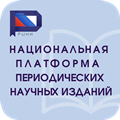МЕТОДИКА ФОРМИРОВАНИЯ БЕЗОПАСНЫХ РЕЖИМОВ РАБОТЫ ГАЗОДЫМОЗАЩИТНИКОВ С УЧЕТОМ МОНИТОРИНГА ПУЛЬСОВЫХ ЗОН
Аннотация
Обоснование. При работе газодымозащитника в аппарате со сжатым воздухом в непригодной для дыхания среде необходимо обеспечивать безопасные режимы их работы на основе дистанционного мониторинга пульсометрии.
Цель. Разработать модель параметров пульсовых зон для управления безопасностью газодымозащитников в дыхательном аппарате со сжатым воздухом в непригодной для дыхания среде.
Материалы и методы. В исследовании приняло участие 30 курсантов (юноши) в возрасте 20-23 года. Фиксировался интервал времени поддержания максимальной интенсивности работы (Хi) при выполнении физических упражнений на беговой дорожке и велотренажере в боевой одежде пожарного с использованием дыхательного аппарата со сжатым воздухом и частота сердечных сокращений при различной физической нагрузке. Обработка результатов осуществлялась с использованием программ Excel и SPSS Statistics 22.
Результаты. Установлено, что в легкой пульсовой зоне наблюдается экспоненциальный закон распределения времени работы, а в умеренной пульсовой зоне – нормальное распределение. Построенная вероятностная модель позволяет обеспечивать процесс принятия решений по оценке безопасности режимов работы на основе дистанционного мониторинга функционального состояния газодымозащитников. Новизна исследования определяется техническими возможностями телеметрических систем современных дыхательных аппаратов со сжатым воздухом.
Заключение. При проектировании телеметрических систем мониторинга безопасности газодымозащитников с учетом количественного показателя пульса, характеризующего их состояние при выполнении работ по тушению пожаров в непригодной для дыхания среде, необходимо учитывать нормальное распределение времени работы в пульсовой зоне и уровень работоспособности газодымозащитника.
Скачивания
Литература
Bakanov M.O., Tarakanov D.V. Distantsionnyy monitoring tekhnogennykh pozharov i chrezvychaynykh situatsiy [Remote monitoring of man-made fires and emergency situations]. Izvestiya vysshikh uchebnykh zavedeniy. Tekhnologiya tekstil’noy promyshlennosti [News of higher educational institutions. Technology of the textile industry.], 2018, no. 1 (373), pp. 173 - 177.
Vetrenko A. A. Ob”emy i intensivnost’ trenirovochnykh nagruzok v bege na sverkhmarafonskie distantsii [The volume and intensity of training loads in running at super marathon distances]. V mire nauchnykh otkrytiy [In the world of scientific discoveries.], 2015, no. 4-2 (64), pp. 726-736.
Grinchenko B.B., Tarakanov D.V. Avtomatizirovannaya sistema upravleniya bezopasnost’yu pri rabotakh na pozharakh v neprigodnoy dlya dykhaniya srede [Automated safety management system when working on fires in an environment unsuitable for breathing]. Pozhary i chrezvychaynye situatsii: predotvrashchenie, likvidatsiya [Fires and emergency situations: prevention, liquidation], 2018, no. 4, pp. 32–36. https://doi.org/10.25257/FE.2018.4.32-36
Zolotavin S.D., Akhtyamov M.Kh., Tselykh E.D. Issledovanie parametrov serdechno-sosudistoy sistemy pri primenenii DASV GDZ pozharnymi (na primere 4PCh FGBU «10 otryad FPS GPS po Khabarovskomu krayu») [Investigation of the parameters of the cardiovascular system when used breathing apparatus with compressed air by firefighters (on the example of the 4th fire department of the GBU “10 squad of FPS GPS in the Khabarovsk Territory”]. Nauchno-tekhnicheskoe i ekonomicheskoe sotrudnichestvo stran ATR v XXI veke [Scientific, technical and economic cooperation of the APR countries in the XXI century], 2021, vol. 2, pp. 195-199.
Purskiy O.I., Fedorenko S.S. Povyshenie effektivnosti trenirovochnogo protsessa gazodymozashchitnikov sredstvami distantsionnogo monitoringa funktsional’nogo sostoyaniya organizma [Improving the effectiveness of the training process of gas and smoke protectors by means of remote monitoring of the functional state of the body]. Nauchnye i obrazovatel’nye problemy grazhdanskoy zashchity [Scientific and educational problems of civil protection], 2013, no. 4 (19), pp. 47-49.
Purskiy O.I., Fedorenko S.S. Formirovanie bazy znaniy spetsializirovannoy ekspertnoy sistemy distantsionnogo monitoringa funktsional’nogo sostoyaniya gazodymozashchitnika [Formation of a knowledge base of a specialized expert system for remote monitoring of the functional state of a gas-smoke diver]. Chrezvychaynye situatsii: promyshlennaya i ekologicheskaya bezopasnost’ [Emergency situations: industrial and environmental safety], 2013, no. 1-2 (13-14), pp. 30-36.
Shalyavin D.N., Tarakanov D.V., Grinchenko B.B. Algoritmy informatsionnoy podderzhki upravleniya bezopasnost’yu uchastnikov tusheniya pozhara v neprigodnoy dlya dykhaniya srede na ob”ektakh energetiki [Algorithms of information support for safety management of participants in fire extinguishing in an]. Sovremennye problemy grazhdanskoy zashchity [Modern problems of civil protection], 2020, no. 3 (36), pp. 53-61.
Shalyavin D.N., Tarakanov D.V., Grinchenko B.B.. Sbornik materialov XV mezhdunarodnoy nauchno-prakticheskoy konferentsii, posvyashchennoy 30-y godovshchine MChS Rossii “Pozharnaya i avariynaya bezopasnost’” [Collection of materials of the XV International scientific and practical conference dedicated to the 30th anniversary of the EMERCOM of Russia “Fire and emergency safety”]. Ivanovo, 2020, pp. 301-304.
Borg G. Borg’s perceived exertion and pain scales. Champaign. IL: Human Kinetics, 1998. 110 p.
Borg G., Hassmen P., Lagerstrem M. Perceived exertion related to heart rate and blood lactate during arm and leg exercise. Eur. J. Appl. Physiol., 1987, vol. 56, no. 6, pp. 679–685. https://doi.org/10.1007/bf00424810
Coca A., Sinkule E. J., Powell J. B., Roberge R. J., Williams W. J. Relation Between OMNI-PRE and Heart Rate Wearing Running Clothes Vs. Firefighter Ensembles During Treadmill Exercise. Medicine and Science in Sports and Exercise, 2008, vol. 40, p. S352. https://doi.org/10.1249/01.mss.0000323411.01038.58
Gomes P., Kaiseler M., Lopes B., Faria S., Queiros C., Coimbra M. Are standard heart rate variability measures associated with the self-perception of stress of firefighters in action? Annu Int Conf IEEE Eng Med Biol Soc. 2013, 2013, pp. 2571-2574. https://doi.org/10.1109/EMBC.2013.6610065
Handl E.H.H., Oppers V.M. The influence of a compressed air breathing apparatus on the pulse frequency and systolic blood pressure during the work load of firemen. T Soc Geneesk, 1974, vol. 52, no. 4, pp. 118-121
Karvonen M., Kentala E., Mustala O. The effects of training on heart rate; a longitudinal study. Annales medicinae experimentalis et biologiae Fenniae, 1957, vol. 35, pp. 307-315.
Lee J.S., Ahn Y.S., Jeong K.S., Chae J.H, Choi K.S. Resilience buffers the impact of traumatic events on the development of PTSD symptoms in firefighters. Journal of Affective Disorders, 2014, vol. 162, pp. 128-133. https://doi.org/10.1016/j.jad.2014.02.031
Londeree B.R., Moeschberger M. L. Effect of age and other factors on maximal heart rate. Research Quarterly for Exercise and Sport, 1982, vol. 53, no. 4, pp. 297-304. https://doi.org/10.1080/02701367.1982.10605252
MacNeal J.J., Cone D.C., Wistrom C.L. Effect of station-specific alerting and ramp-up tones on firefighters’ alarm time heart rates. Journal of occupational and environmental hygiene, 2016, vol. 13, pp. 866-870. https://doi.org/10.1080/15459624.2016.1183018
Marciniak R.A, Tesch C.J., Ebersole K.T. Heart rate response to alarm tones in firefighters. International Archives of Occupational and Environmental Health. 2021, vol. 94, no. 5, pp. 783-790. DOI: 10.1007/s00420-020-01646-y
Marshall R. E., Milligan-Saville J. S., Mitchell P. B., Bryant R. A., Harvey S. B. A systematic review of the usefulness of pre-employment and pre-duty screening in predicting mental health outcomes amongst emergency workers. Psychiatry Research, 2017, vol. 253, pp. 129-137. https://doi.org/10.1016/j.psychres.2017.03.047
Pantalonia F, Capitaineb C, Le Duffc F, Stevea JM, Barberisa J. Tolérance physique au port de l’appareil respiratoire isolant chez les sapeurs-pompiers. Archives des Maladies Professionnelles et de l’Environnement, 2010, vol. 71, no. 5, pp. 790-797. https://doi.org/10.1016/j.admp.2010.09.005
Porto L. G. G., Korre M., Moffatt S., Kales S. N. Physical Fitness and Heart Rate During Exercise Testing as Predictors of Cardiac Autonomic Impairment among Firefighters: 2271 Board #2 June 2, 3. Medicine & Science in Sports & Exercise, 2016, vol. 48, p. 631. https://doi.org/10.1249/01.mss.0000486892.45973.21
Robergs R., Landwehr R. The surprising history of the “HRmax=220-age” equation. International Journal of Online Engineering, 2002, vol. 5, no. 2, pp. 1-10.
Shargal E., Kislev-Cohen R., Zigel L., Epstein S., Pilz-Burstein R., Tenenbaum G. Age-related maximal heart rate: examination and refinement of prediction equations. J. Sports Med. Phys. Fitness, 2015, vol. 55, pp. 1207–1218.
She J., Nakamura H., Makino K., Ohyama Y., Hashimoto H. Selection of Suitable Maximum-heart-rate Formulas for Use with Karvonen Formula to Calculate Exercise Intensity. International Journal of Automation and Computing, 2015, vol. 12, no. 1, pp. 62-69. https://doi.org/10.1007/s11633-014-0824-3
Smith D.L., Haller J. M., Benedict R., Moore-Merrell L. Firefighter Incident Rehabilitation: Interpreting Heart Rate Responses. Prehospital Emergency Care, 2016, vol. 20, pp. 28-36. https://doi.org/10.3109/10903127.2015.1037477
Tanaka H., Monahan K. D., Seals D. R. Age-predicted maximal heart rate revisited. Journal of the American College of Cardiology, 2001, vol. 37, no. 1, pp. 153-156. https://doi.org/10.1016/s0735-1097(00)01054-8
Vyas K., McGregor C. The Use of Heart Rate for the Assessment of Firefighter Resilience: A Literature Review. IEEE Life Sciences Conference (LSC), 2018, pp. 259-262. https://doi.org/10.1109/LSC.2018.8572095
Просмотров аннотации: 315 Загрузок PDF: 230
Copyright (c) 2021 Denis N. Shalyavin, Elena A. Shmeleva, Denis V. Tarakanov, Boris B. Grinchenko

Это произведение доступно по лицензии Creative Commons «Attribution-NonCommercial-NoDerivatives» («Атрибуция — Некоммерческое использование — Без производных произведений») 4.0 Всемирная.






















































